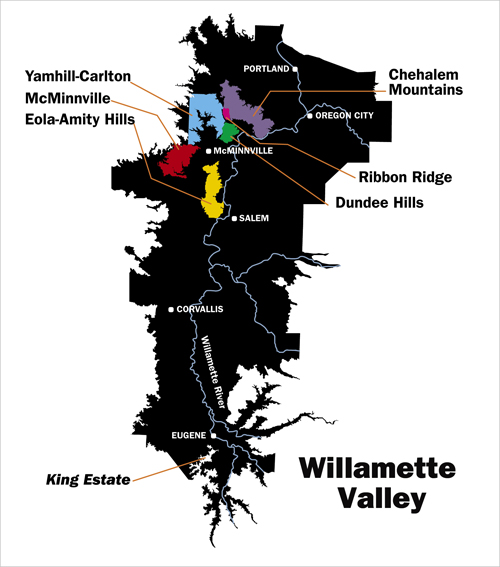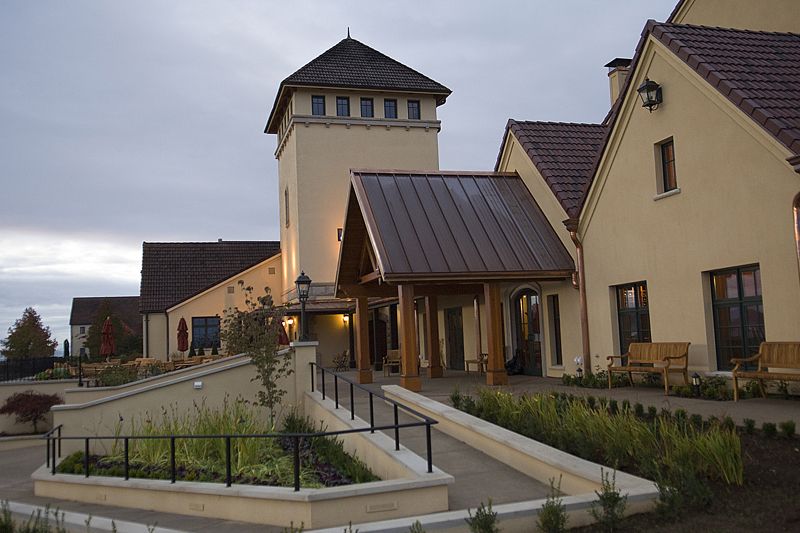King-Sized AVA
Winery proposes to expand Willamette Valley south
A recent proposal to expand the Willamette Valley AVA (American Viticulture Area) by approximately five miles to the south has been “Accepted as perfected,” meaning the petition meets the requirements for boundary expansion, but it is not a guarantee that the Taxation and Trade Bureau (TTB) will proceed with the rulemaking.
David Adelsheim first drew the Willamette Valley AVA boundaries in 1982. According to him, “the basis of the Willamette Valley AVA was less about the water basin — the idea that where rain falls, that water will eventually find its way to the Willamette River — but points that are 1,000-feet elevation. Not all of the AVA lies inside the water basin. Some of the hills on the east side of the AVA flow into the Sandy River, then eventually, the Columbia.”
“Points in between the 1000-foot elevation marks either followed county lines, roads or where just made straight,” continued David.

So why would someone propose a change to the AVA expanding the boundaries approximately five miles to the south where the rain would enter the Siuslaw Slough, making its way to the Siuslaw River and eventually to Florence on the coast?
After all, the more famous sub-AVAs are in the Northwest quadrant, from Hillsboro to just north of Salem. The Willamette Valley has acres and acres of land still available for purchase, even in the most prized areas like the Dundee Hills, Chehalem Mountains and Yamhill-Carlton AVAs, so why petition to expand, and only to the south?
Two words: King Estate.
Oregon’s largest winery, King Estate, located just south of Eugene outside the Willamette Valley AVA, wants to use that nomenclature. Take a look at any of their bottles. They state “Oregon” on them.
“For years, we thought our winery was in the Willamette Valley,” said Steve Thompson, executive vice president of King Estate. “It wasn’t until a survey was done that we realized the winery was actually 50 feet outside the AVA.”
King Estate hired attorney Cary Greene, former chief operating officer of WineAmerica, who is currently with the Northwest’s top law firm, Davis Wright Tremaine LLC, to execute the accepted proposal.
Local geologists Kevin Pogue and Scott Burns also helped write the four-page proposal, stating that in regard to soil, there is no difference between the proposed area and 20 miles north.
When asked if it seems unusual for one client, albeit Oregon’s largest winery to change established maps, Greene said, “We are looking to add less than 1 percent to the current AVA and only the orphaned area in between the already existing Willamette Valley and Umpqua Valley AVAs.”
Laurent Montalieu, on the board of directors for the Willamette Valley Wineries Association and owner/winemaker for Soléna Estate, spoke on behalf of the board stating, “The WVWA welcomes the inclusion of high-quality acreage into the AVA. When the lines were initially drawn, an important part of the AVA that shares similar geological characteristics and climate to other parts of the Willamette Valley was not included. Due to this, hundreds of acres of vineyards and a prominent Oregon winery will not be included.”
“In 1982 when we drew up the AVA lines, we had no idea that the southern portion would be such a hotbed of grapegrowing,” Adelsheim added. “King Estate wasn’t established until 1989. The soil in the proposed area is the same; their wines are just like the Willamette Valley, so I have no problem with it. No harm comes to anybody with this change.”
Since the petition was deemed “perfected” by the TTB, the next step comes late July when comments will be heard about the proposal. Finally, if no opposition is found, the petition will be passed around approximately four different desks for three to four months before being ratified.
Writer Robert Volz is a freak about labeling laws and is disappointed that Sour Patch Kids crackers don’t contain actual kids when not running Pour Wine Bar in Portland.













